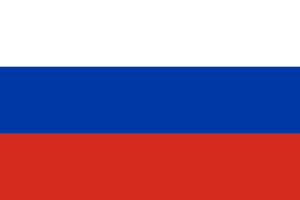Language/Russian/Culture/Traditional-Celebrations
| ◀️ National Holidays — Previous Lesson | Next Lesson — Modes of Transportation ▶️ |
Russian Culture: Traditional Celebrations[edit | edit source]
Welcome to the lesson on traditional Russian celebrations! In this lesson, we will explore some of the most important and widely celebrated traditions in Russia. From Maslenitsa to Easter and Russian Christmas, we will delve into the rich cultural heritage of these festivities. By the end of this lesson, you will have a deeper understanding of Russian traditions and the significance behind these celebrations.
Maslenitsa[edit | edit source]
One of the most beloved Russian celebrations is Maslenitsa, also known as Pancake Week. Maslenitsa is a week-long celebration that takes place before the start of Lent in the Orthodox Christian calendar. It is a time of feasting, merriment, and the saying goodbye to winter. The centerpiece of Maslenitsa is the traditional Russian pancake, or blini. Blini are thin, round pancakes made from wheat or buckwheat flour and often filled with various sweet or savory fillings. During Maslenitsa, families gather to make and eat blini together, symbolizing the end of winter and the arrival of spring. The festivities also include music, dancing, and the burning of a straw effigy, called "Lady Maslenitsa," to bid farewell to winter.
Easter[edit | edit source]
Easter is one of the most important religious holidays in Russia. It is celebrated in accordance with the Orthodox Christian calendar and is a time of great joy and spiritual significance. Russian Easter traditions are deeply rooted in religious customs and cultural practices. The night before Easter Sunday, people gather in churches for the midnight service, known as the Easter Vigil. The service is marked by the lighting of candles, the singing of hymns, and the proclamation of Christ's resurrection. After the service, families bring baskets of food to be blessed by the priest. These baskets typically contain traditional Easter foods such as colored eggs, kulich (a sweet bread), paskha (a cheese dessert), and various meats and vegetables. On Easter Sunday, families gather for a festive meal and exchange greetings of "Christ is risen!" to which the response is "Indeed, He is risen!"
Russian Christmas[edit | edit source]
Russian Christmas is celebrated on January 7th, according to the Orthodox Christian calendar. It is a time of religious observance and family gatherings. The Christmas season officially begins with a 40-day period of fasting, similar to Lent. On Christmas Eve, families traditionally gather for a special meal known as the Holy Supper. The Holy Supper consists of twelve dishes, symbolizing the twelve apostles, and typically includes kutya (a sweet grain pudding), borscht (beet soup), fish, and various other traditional dishes. After the meal, families may attend a midnight church service to celebrate the birth of Christ. Russian Christmas is a time of reflection, prayer, and unity with loved ones.
Conclusion[edit | edit source]
In this lesson, we explored traditional Russian celebrations, including Maslenitsa, Easter, and Russian Christmas. These celebrations are deeply rooted in Russian culture and hold great importance for the Russian people. From the joyous feasting of Maslenitsa to the spiritual significance of Easter and the reflective observance of Russian Christmas, these traditions provide a glimpse into the rich cultural heritage of Russia. By understanding and appreciating these celebrations, we gain a deeper insight into the values and traditions that shape Russian society. In the next lesson, we will continue our exploration of Russian culture by delving into the fascinating world of Russian literature and arts.
Videos[edit | edit source]
Traditions That Surprise Foreigners in a Russian Culture - YouTube[edit | edit source]
Sources[edit | edit source]
- Russian Events and Holidays - Language and Culture Studies
- Understanding Russian Culture: Holidays and Traditions
- The best Russian festivals and celebrations | Expatica
Other Lessons[edit | edit source]
- Dance
- Russian Cuisine
- Russian Literature
- Soviet Era and Modern Russia
- Matryoshka Doll
- Russian Art and Music
- Icons and Churches
- Antarctica Timeline
- Famous Writers
- Celebrations
| ◀️ National Holidays — Previous Lesson | Next Lesson — Modes of Transportation ▶️ |

